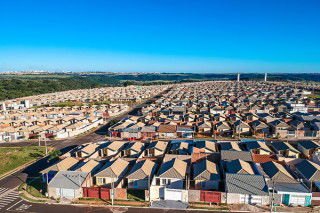Positioned between the two most populous nations on Earth, the emerging economies of southeast Asia have ridden the wave of economic growth in the early years of the century. Between 2000 and 2014 the 10 ASEAN countries saw their collective real GDP grow at 5.7 per cent annually and look set to continue this trend over the next five years. Cement demand has kept up with this brisk pace of expansion and – according to figures from Morgan Stanley – will continue to do so, growing at 5.2 per cent each year to 2020. But despite the good news the cement sector risks becoming a victim of its own success. Surging consumption has triggered a massive expansion in capacity across the board.
Figures from Siam Cement suggest that capacity in Thailand, Indonesia and Vietnam could reach 266Mta in 2018, more than enough to meet local demand, which for 2015 stood at just 154Mta. Taking Morgan Stanley's predictions as a guide, consumption in 2018 could reach 180Mt in these three countries, leaving a gap between demand and capacity of 86Mta. Exports offers a potential solution, but competition is fierce given capacity is rising throughout the region.
Vietnam
The pressure that overcapacity is putting on companies’ bottom lines is already beginning to make itself felt. Earlier this week the general manager of Holcim Vietnam, Nguyen Cong Bao, said that the firm was considering withdrawing from the country due to oversupply in the domestic market. Holcim Vietnam will publish more detailed plans within three weeks. Latest figures from Vietnam's General Statistics Office show that output in April was 12.5 per cent higher than a year earlier at 7.1Mt.
Vietnam is unusual in the region in that its cement sector depends heavily on exports. In 2016 the government estimated that these would remain at 16-17Mt, double the 2012 level of 8.7Mt. Given growing capacity in Indonesia and across the region, Vietnamese exporters may struggle to retain a share of these markets.
Indonesia
Indonesia in particular is facing problems of its own as regards surplus capacity. A report in this week’s Jakarta Globe newspaper warned of a 'supply glut' with the entry of foreign firms and the expansion of domestic producers. Supply is projected to reach 103Mta by 2018, while the Indonesian Cement Association (ASI) predicts that domestic demand for 2016 will be in the region of 63Mt.
Even this figure might be too optimistic according to Fitch. The ratings agency believes that annual consumption growth in 2016 will be towards the lower end of ASI’s forecast of four to five per cent. Fitch blames a weather-driven slowdown in the property sector for disappointing first quarter demand and suggests that this portion of the market may remain depressed until the end of Eid in July. Consumption due to infrastructure projects grew healthily at 7.9 per cent YoY, but this only represents around a quarter of total demand.
In response to the growing gap between capacity and domestic demand, Indonesian producers are beginning to look further afield. Cement exports reached 1Mt in 2015, up 280 per cent on the previous year. In the past, Indonesia has been an exporter of clinker and an importer of cement but is now more than capable of meeting its domestic needs internally.

Brazil’s cement market contracts in August
Cement sales in Brazil slipped 2.5 per cent to 6Mt in August 2025 from 6.154Mt in August 2024, a...